Last updated on
Discover the importance of a backsplash in your kitchen and how it can make a significant difference in both functionality and aesthetics.
The kitchen is the heart of any home. It’s where we cook, eat, and spend quality time with our loved ones.
When it comes to designing or renovating a kitchen, there are a lot of decisions to make. One such decision is whether or not to install a backsplash.
Some people swear by them for their practicality and aesthetic appeal while others see them as an unnecessary expense. So, do you really need a backsplash in your kitchen? In this article, we’ll explore the pros and cons of having a backsplash and help you decide if it’s right for your home.
What's Inside
Importance of a Kitchen Backsplash

A kitchen backsplash is an essential element that serves both functional and aesthetic purposes. It’s a protective layer that shields your walls from splatters, spills, and stains while cooking or washing dishes.
Without it, the walls behind your stove or sink would be vulnerable to damage over time.
Moreover, a backsplash can add character and style to your kitchen by complementing the overall design scheme of the space. Whether you prefer classic subway tiles or bold patterns with vibrant colors, there are endless options available for every taste.
In addition to its practicality and visual appeal, having a backsplash in your kitchen can also increase the value of your home if you ever decide to sell it in the future. Potential buyers will appreciate this feature as it shows attention-to-detail in maintaining cleanliness while adding personality at minimal cost.
Does a Backsplash Add Value?

The answer is yes; a backsplash can increase the value of your kitchen and overall home. A well-designed backsplash adds visual interest and elevates the look of your kitchen, making it more appealing to potential buyers.
In addition to aesthetics, a backsplash also serves practical purposes such as protecting walls from water damage or stains caused by cooking splatters. This means that not only does a backsplash enhance the appearance of your kitchen but also helps maintain its cleanliness and longevity.
However, keep in mind that not all types of backslashes are created equal when it comes to adding value. Some materials like natural stone or glass tiles tend to be more expensive than others like ceramic tiles or peel-and-stick options.
Ultimately, whether you decide on installing a new backsplash for personal enjoyment or resale purposes depends on various factors such as budget constraints and personal preferences.
Choosing the Right Style
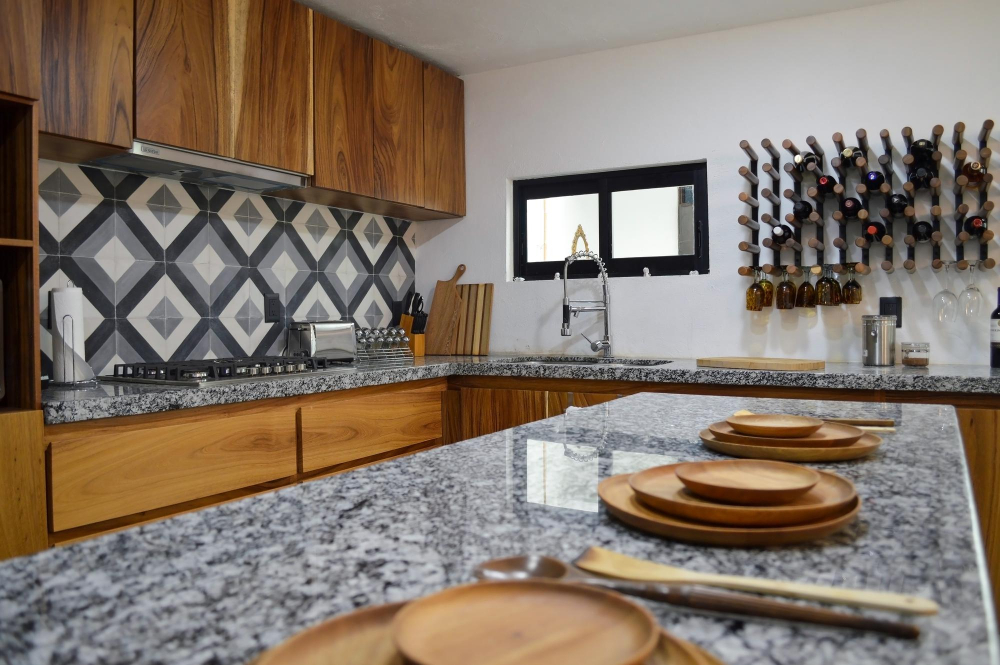
The style you choose will depend on your personal taste and the overall design of your kitchen. Some popular styles include classic subway tiles, mosaic patterns, geometric shapes, and natural stone.
If you have a modern or contemporary kitchen design with clean lines and minimalistic features, consider using large-format tiles in neutral colors like white or gray. This will create a sleek look that complements the rest of your space.
For those who prefer something more traditional or rustic-looking kitchens with warm wood tones can benefit from natural stone backsplashes such as marble or granite which add texture to space while still being functional.
Mosaic patterns are also an excellent choice for adding visual interest to any style of kitchen decor. They come in various materials such as glass tile mosaics that reflect light beautifully creating an illusion of depth while providing easy maintenance due to their non-porous nature.
Trends in Kitchen Backsplashes
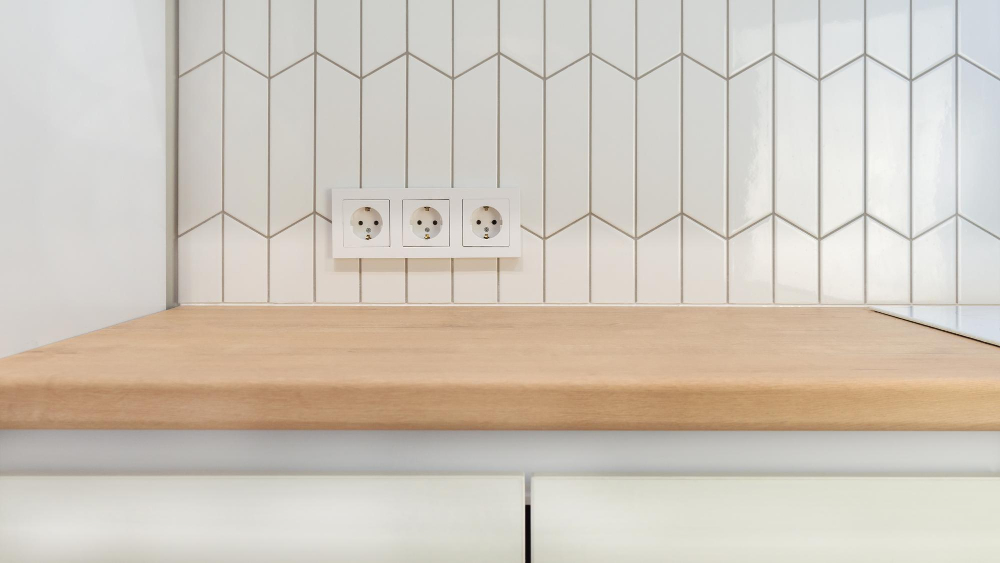
With the rise of open-concept kitchens, homeowners are looking for ways to make their kitchen stand out while still maintaining functionality. Here are some of the latest trends in kitchen backsplashes:
1. Bold Colors: While white and neutral-colored tiles remain popular, bold colors like navy blue, emerald green or even black are making their way into modern kitchens.
2. Large-Scale Patterns: Oversized patterns such as geometric shapes or floral prints can add visual interest and texture to your kitchen walls.
3. Mixed Materials: Combining different materials like glass with metal or stone with wood can create unique designs that reflect your personal style.
4. Textured Tiles: Three-dimensional tiles add depth and dimensionality to any space while also providing tactile interest.
5. Metallic Finishes: Copper, brass, gold-toned metals provide warmth and glamour when used as accents on tile surfaces.
Materials for Kitchen Backsplashes
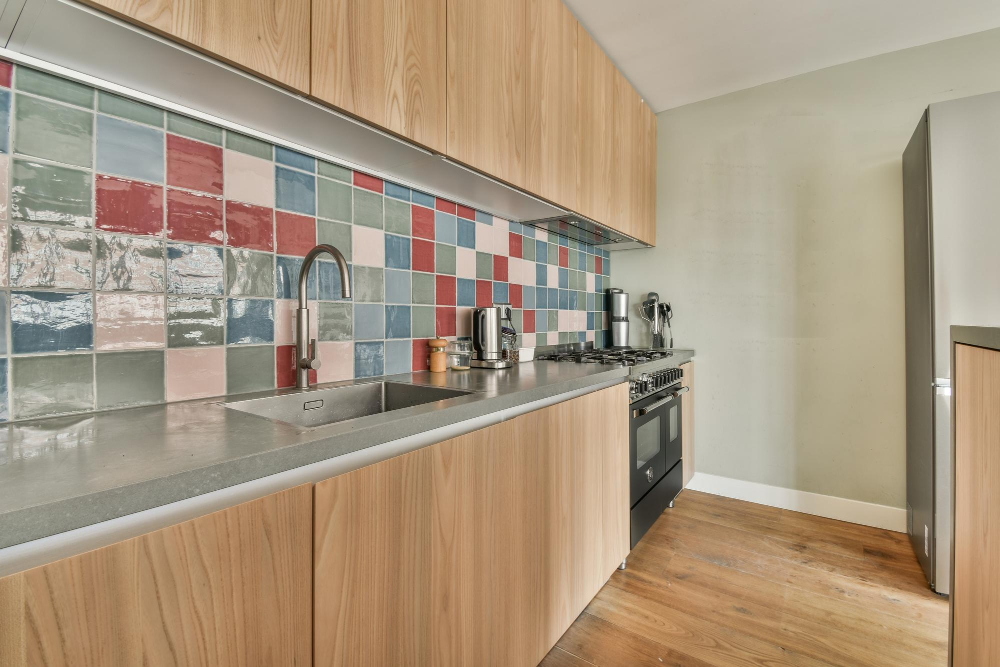
Each material has its own unique advantages and disadvantages, so it’s important to consider your needs and preferences before making a decision.
One popular option is ceramic tile. It’s durable, easy to clean, and comes in a wide variety of colors and patterns.
Glass tiles are another great choice as they reflect light beautifully which can make small kitchens appear larger than they actually are.
Natural stone such as marble or granite is also an excellent choice for those who want something more luxurious-looking but keep in mind that these materials require regular maintenance like sealing every few years.
Metallic finishes like stainless steel or copper add an industrial look while being very practical since they’re resistant to heat damage from stovetops.
Other materials include porcelain tiles that mimic natural stone without the high cost; mosaic tiles made from glass or other materials arranged into intricate designs; brick veneer which gives off rustic vibes perfect for farmhouse-style kitchens; vinyl wallpaper with waterproof properties ideal if you’re on a tight budget but still want something stylish yet functional!
Tile Patterns and Designs
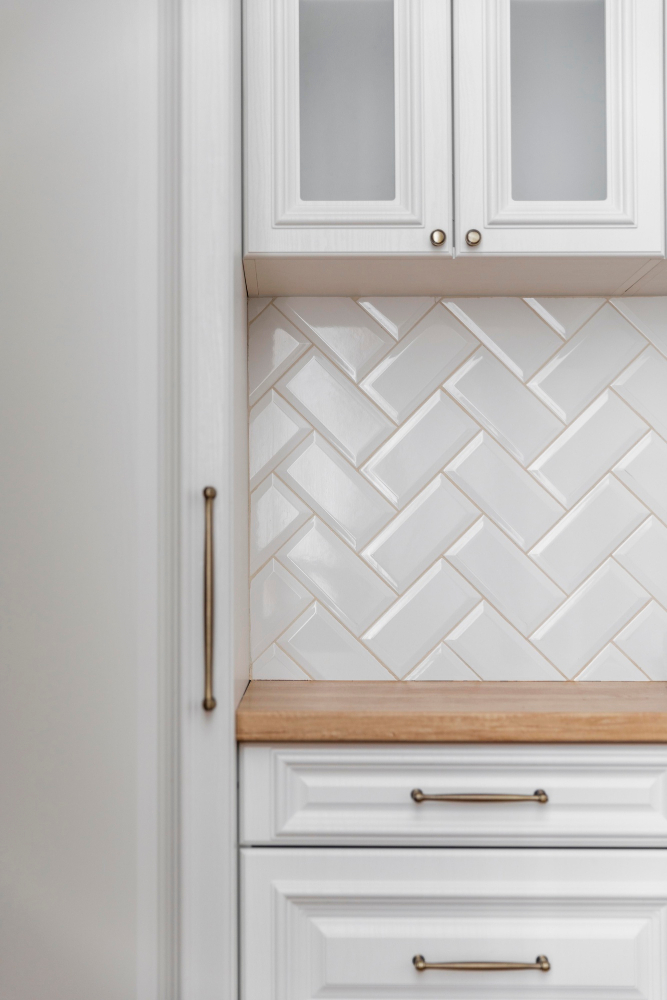
Not only is it durable and easy to clean, but there are also countless design options available. From classic subway tiles to intricate mosaics, the possibilities for creating a unique look in your kitchen are endless.
One way to add interest with tile is by playing around with patterns. A herringbone pattern can create a modern yet timeless feel while diagonal or chevron patterns can add visual interest without being too overwhelming.
For those who prefer a more traditional look, consider using square tiles laid out in a simple grid pattern.
Another option for adding texture and depth through tile design is by incorporating different shapes such as hexagons or arabesque tiles into your backsplash layout. These shapes offer an unexpected twist on classic designs that will make your kitchen stand out from others.
Grout Options for Backsplashes

Grout is used to fill in the gaps between tiles and helps keep them in place. It also plays a significant role in how your backsplash looks overall.
There are several types of grouts available on the market today, each with its own unique benefits and drawbacks. The most common types of grouts include cement-based, epoxy-based, and urethane-based.
Cement-Based Grouts: These are traditional grouts that have been around for decades. They’re affordable and easy to work with but can be prone to cracking over time if not sealed properly.
Epoxy-Based Grouts: Epoxy-based grouts are more expensive than cement-based ones but offer superior durability and stain resistance. They’re also less likely to crack or shrink over time compared to other options.
Urethane-Based Grouts: Urethane based-grouting materials provide excellent flexibility which makes them ideal for use on surfaces that experience movement such as countertops or floors adjacent walls where there may be some settling issues due foundation shifts etcetera.
Peel & Stick/Groutless Tile
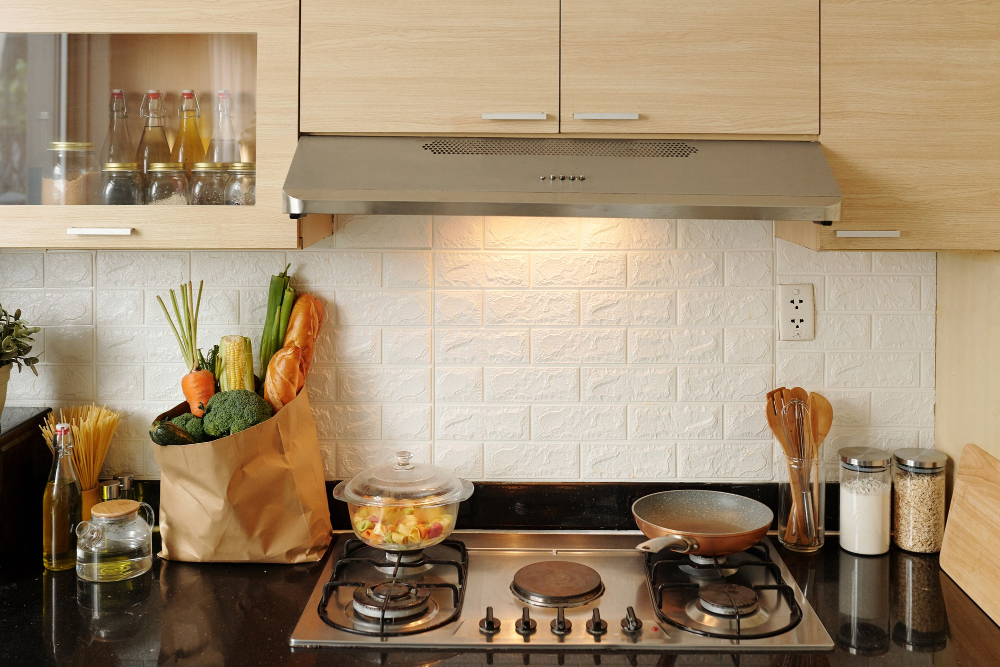
These tiles are easy to install and require no grouting, making them an excellent choice for DIY enthusiasts or those on a tight budget.
However, it’s important to note that peel and stick/groutless tile may not be as durable as traditional tile options. They can also be more challenging to clean since there are no grout lines between each piece.
If you’re considering this type of backsplash material, make sure you choose high-quality tiles that will withstand daily wear and tear. It’s also essential to follow the manufacturer’s instructions carefully during installation so that your new backsplash looks great and lasts long.
Peel & Stick/Groutless Tile is an excellent option if you’re looking for an affordable way to update your kitchen quickly.
Alternatives to Kitchen Backsplash

If you’re looking for something different or want to save money on installation costs, there are several alternatives worth considering.
One alternative is using paint instead of tiles. Painting your walls with a high-quality paint that is easy to clean can give you the same effect as a backsplash without having to install one.
You could also use wallpaper designed specifically for kitchens and bathrooms that are moisture-resistant and easy-to-clean.
Another option is installing stainless steel panels behind your stove or sink area. Stainless steel provides an industrial look while being durable and low-maintenance.
If you’re looking for something more natural, consider installing stone slabs or brick veneers as an accent wall in place of traditional tile backsplashes. These materials add texture and warmth while still protecting your walls from splatters.
Matching Backsplash With Countertop Materials
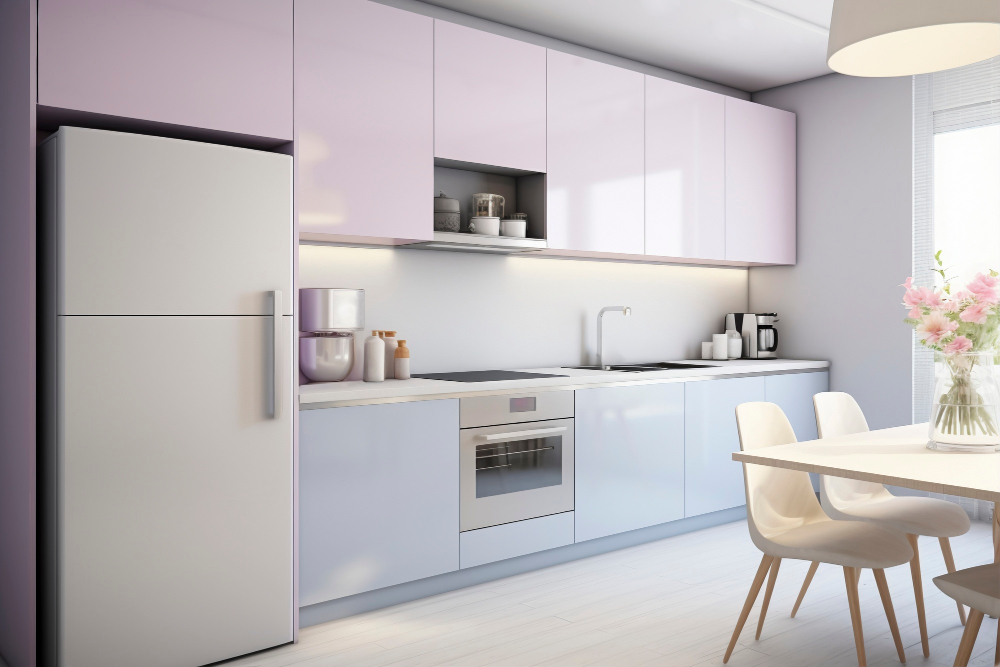
These two elements can either complement or clash with each other, so it’s essential to choose wisely. Matching your backsplash with countertop materials is a great way to create a cohesive look in your kitchen.
For example, if you have granite countertops that feature intricate patterns and veining, consider pairing them with a simple subway tile backsplash in neutral colors like white or beige. This will allow the beauty of the granite to shine through without overwhelming the space.
On the other hand, if you have solid surface countertops in a bold color like red or blue, consider using tiles that incorporate those same hues into their design for an eye-catching effect.
Another option is to match textures between countertop and backsplash materials. For instance: pairing rough-hewn stone counters with similarly textured slate tiles on walls creates an earthy feel throughout space while smooth marble surfaces paired up against glossy glass mosaics give off modern vibes.
Budgeting for a Kitchen Backsplash

The cost of materials and installation can vary greatly depending on the type of backsplash you choose. For example, ceramic tiles tend to be more affordable than natural stone or glass tiles.
Another factor that affects the cost is the size of your kitchen and how much area needs to be covered by the backsplash. If you have a large kitchen with lots of counter space, then your costs will naturally be higher.
It’s important not only to consider upfront costs but also long-term maintenance expenses when choosing a material for your backsplash. Some materials require more upkeep than others, which could add up over time.
To stay within budget while still achieving an attractive look in your kitchen, consider using less expensive tile options like subway or mosaic patterns instead of intricate designs made from pricier materials like marble or metal.
Backsplash Installation Costs

It’s important to consider the cost of installation before making any decisions. The cost of installing a backsplash will depend on several factors, including the size of your kitchen, the type of material you choose for your backsplash, and whether or not you plan on doing it yourself.
If you’re planning on hiring a professional installer for your project, expect to pay anywhere from $800-$2,500 depending on these factors mentioned above. If you decide that DIY is more up your alley then costs could range from $200-$1k depending again upon materials chosen.
It’s also worth noting that some materials are more expensive than others when it comes to installation costs. For example: glass tiles require special tools and expertise which may increase labor charges while peel-and-stick options are easier but might not last as long as other types.
Easiest-to-Install Backsplashes

These types of backsplashes are perfect for those who want to give their kitchen a facelift without spending too much time or money on the project.
One popular option is peel-and-stick tile. This type of tile comes with adhesive backing that allows you to simply stick it onto your wall without any additional tools or materials needed.
It’s also easy to remove if you decide later on that you want something different.
Another option is groutless tiles, which come in large sheets and can be cut down to size with scissors or a utility knife. They don’t require any grouting, making them even easier and quicker to install than traditional tiles.
There are also pre-made panels made from materials like stainless steel or glass that can be easily attached directly onto the wall using screws or adhesive strips.
DIY Vs Professional Installation
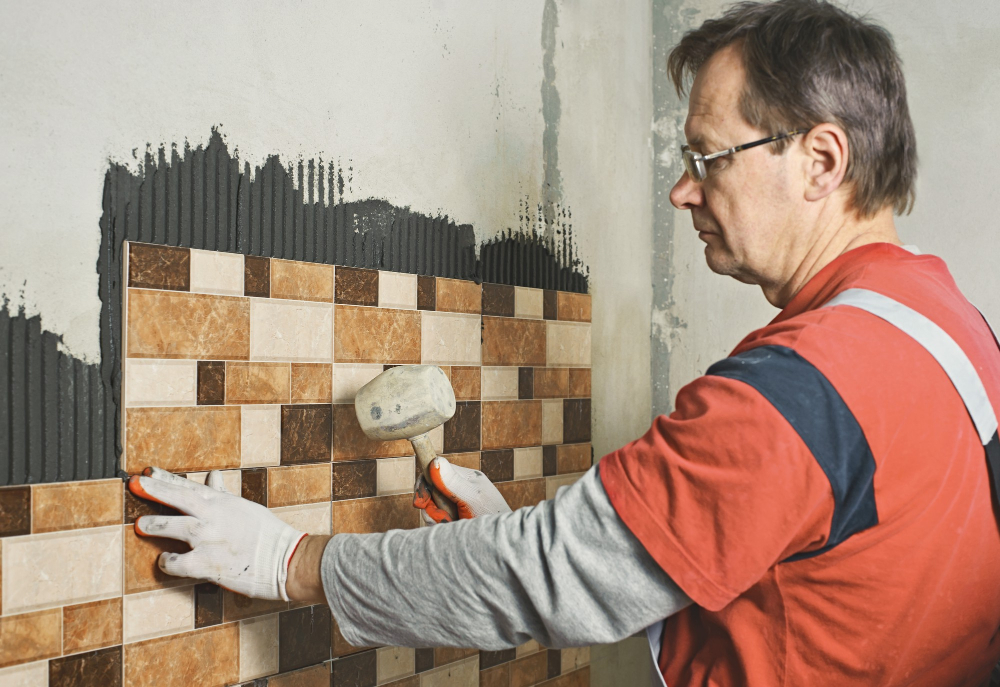
While DIY installation can save money, it’s important to consider your skill level and experience with home improvement projects before taking on such a task.
Installing a backsplash requires precision and attention to detail. If you have experience with tiling or other similar projects, then DIY may be an option for you.
However, if this is your first time attempting something like this, it might be best left in the hands of professionals.
Professional installation ensures that everything will be done correctly from start to finish without any mistakes along the way. They also have access to specialized tools that are necessary for proper installation which can save time and effort compared with doing it yourself.
Measuring and Planning Your Backsplash Project
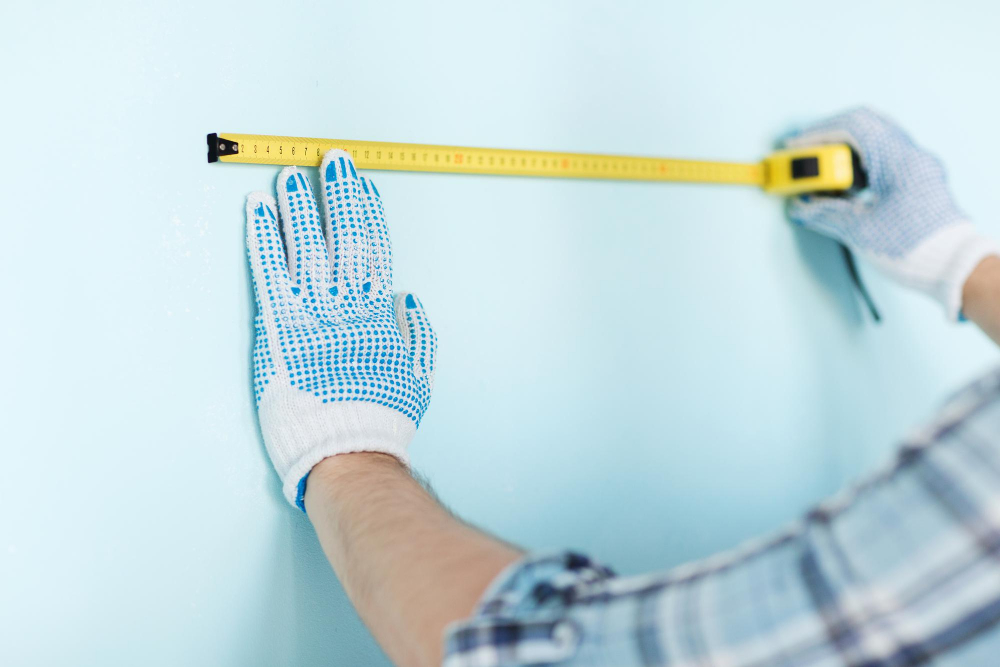
Measuring accurately will ensure that you purchase enough materials for the job and avoid any unnecessary expenses or delays. Start by measuring the length of each wall where you want to install a backsplash.
Then, multiply this number by its height to get the total square footage needed for your project.
Once you have determined how much material is required, it’s time to plan out your design. Consider factors such as color scheme, pattern options, and tile size when selecting materials for your backsplash project.
It’s also important to think about how far up on the wall you want your backsplash installed – some people prefer full-height installations while others opt for partial coverage only behind their stove or sink area.
Backsplash Maintenance Tips
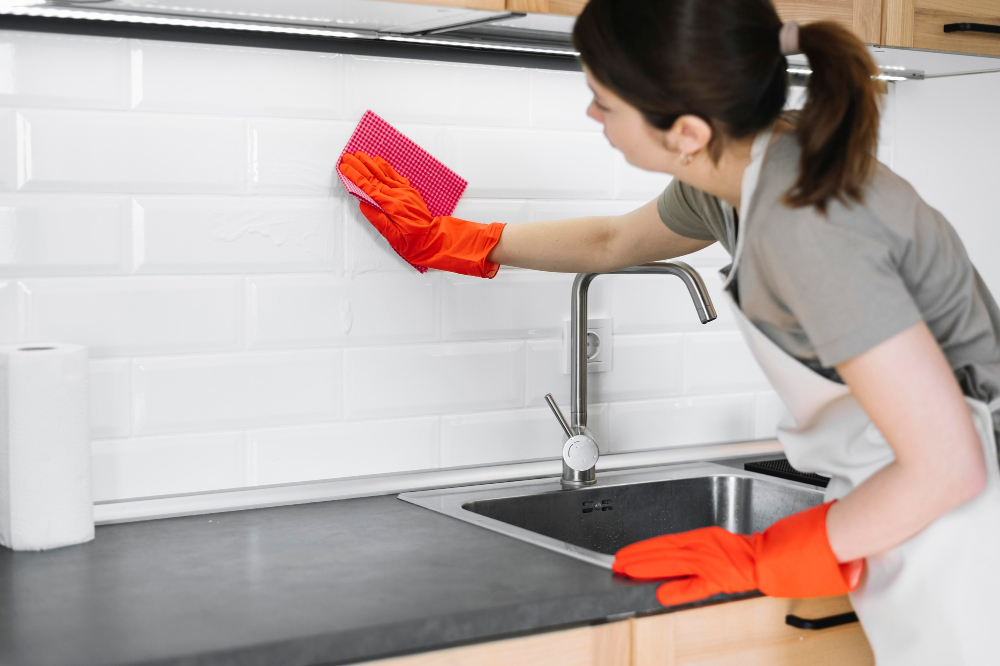
Regular cleaning and maintenance will help keep your backsplash looking new for years to come. Here are some tips on how to care for your kitchen backsplash:
1. Clean up spills immediately: Wipe away any spills or splatters as soon as they happen, especially if they’re acidic or oily substances that can stain the surface.
2. Use mild cleaners: Avoid harsh chemicals that can damage the finish of your backsplash tiles or grout lines.
3. Don’t use abrasive materials: Scrubbing pads and steel wool should be avoided when cleaning a tile-based backslash because these materials may scratch the surface of tiles.
4. Seal porous surfaces regularly: If you have natural stone tiles like marble, granite etc., make sure you seal them every year so that stains don’t penetrate into their pores.
5. Avoid using too much water while cleaning: Excessive moisture could seep behind the tile causing mold growth over time.
Eco-Friendly Backsplash Choices

Recycled glass tiles are a popular choice as they use up to 100% recycled materials and come in a variety of colors and patterns. Another great option is reclaimed wood, which can add warmth and character to your kitchen while also being environmentally friendly.
For those who want something truly unique, consider using salvaged materials such as vintage tin ceiling tiles or old wine corks. These options not only look great but also reduce waste by repurposing items that would otherwise end up in landfills.
When choosing an eco-friendly backsplash material, it’s important to consider the manufacturing process as well as the product itself. Look for companies that prioritize sustainability and ethical practices throughout their supply chain.
Incorporating an eco-friendly backsplash into your kitchen design not only benefits the environment but can also add style and personality to your space.
Pros and Cons of Backsplash Elements
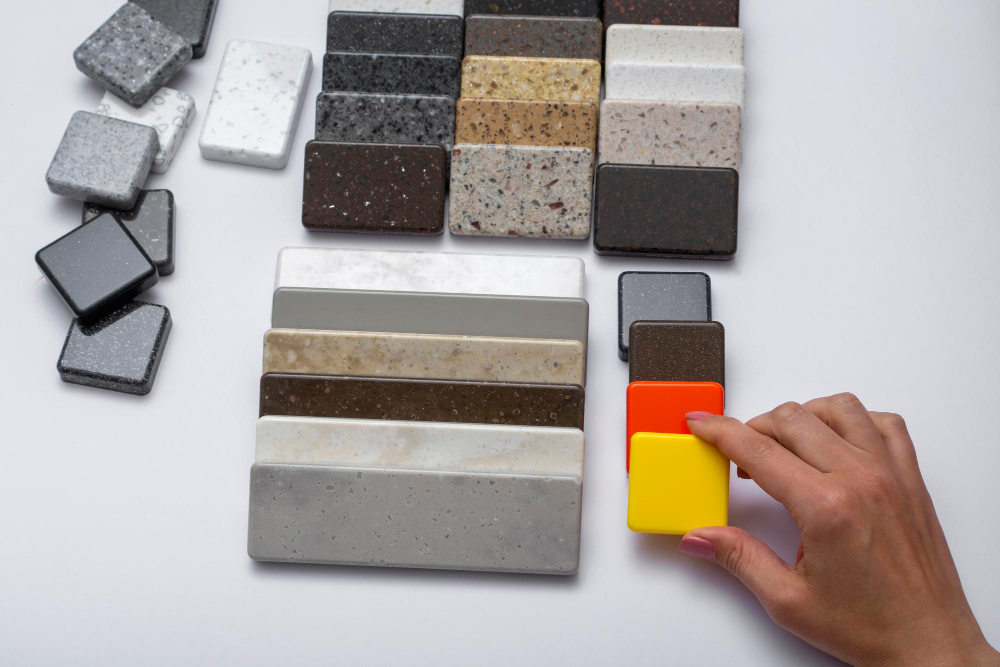
Each material has its own unique set of pros and cons that you should consider before making a decision.
Ceramic tiles are one of the most popular choices for kitchen backsplashes because they come in many different colors, patterns, and sizes. They’re also easy to clean with just soap and water.
However, ceramic tiles can be prone to cracking or chipping if something heavy falls on them.
Glass is another popular choice because it’s easy to clean and adds a modern touch to any kitchen design. It’s also heat-resistant which makes it ideal for behind stovetops or ovens.
On the downside, glass can be expensive compared with other materials like ceramic tile or vinyl.
Natural stone such as marble or granite is an elegant option that adds value but requires more maintenance than other options due its porous nature which makes staining possible if not sealed properly during installation process. Metallic finishes like stainless steel add an industrial look while copper gives off warmth; however both require regular cleaning as fingerprints show up easily on these surfaces.
Vinyl sheets offer affordability along with ease-of-installation but may not last long-term compared with other options mentioned above.
Creative Backsplash Ideas

One popular option is using mosaic tiles in various colors and patterns to create a one-of-a-kind design. Another idea is incorporating natural stone or brick for an earthy feel.
For those who want something truly eye-catching, consider using metallic tiles or mirrored glass for a modern and glamorous look. You could also opt for textured materials like 3D tiles or embossed metal sheets.
If you’re feeling adventurous, why not try creating your own DIY backsplash? Use reclaimed wood planks, vintage tin ceiling panels, or even wine corks as the base material for an eco-friendly yet stylish addition to your kitchen.
FAQ
Can you have a kitchen with no backsplash?
Yes, you can have a kitchen without a backsplash, although most kitchen designers recommend incorporating one.
Can I skip a backsplash?
Yes, you can skip a backsplash if it is out of your budget, as it can save you between $600 to $1400.
Do modern kitchens have backsplash?
Yes, modern kitchens typically have backsplashes, as they are a popular design trend with understated elegance, clean lines, and sleek style.
How can I protect my kitchen walls without backsplash?
To protect your kitchen walls without a backsplash, paint a band or panel of washable paint behind the countertop and cooker, either in the same color, contrasting tone, or a different color.
What are some alternative options for protecting kitchen walls besides backsplash?
Some alternative options for protecting kitchen walls besides backsplash include using wall panels, acrylic sheeting, stainless steel sheets, paint, and wallpaper.
What factors should be considered when deciding whether to install a backsplash in the kitchen?
Factors to consider when deciding to install a backsplash in the kitchen include aesthetics, protection against damage, budget, and ease of maintenance.
Are there specific kitchen styles or designs where a backsplash is not necessary or recommended?
A backsplash may not be necessary or recommended in minimalist or ultra-modern kitchen designs.




